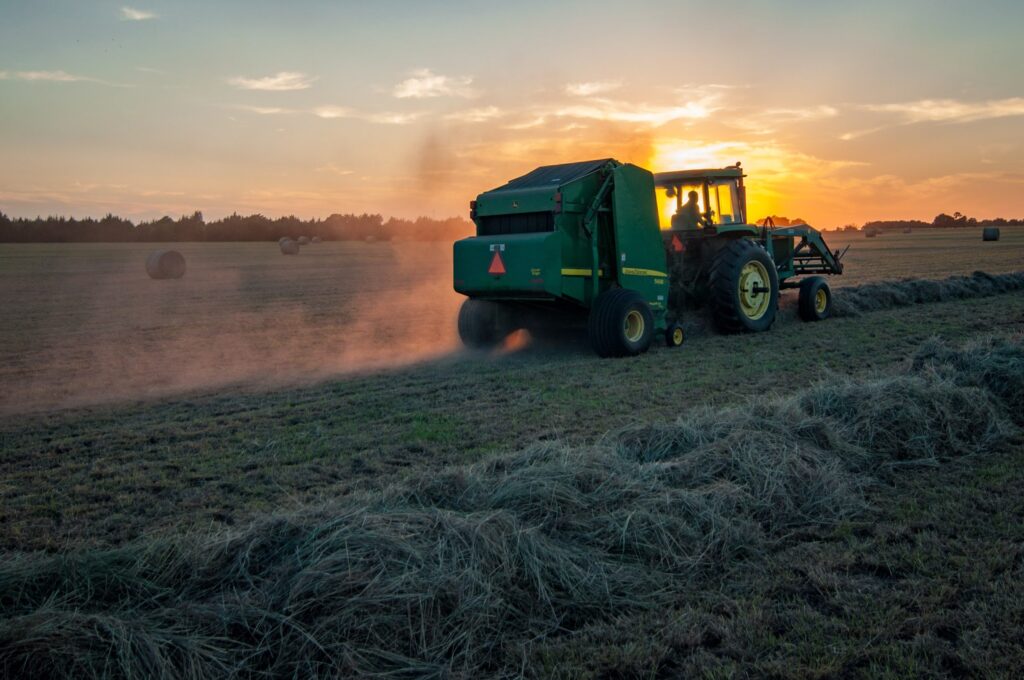Each year at the end of March, the USDA releases their Prospective Plantings report. This report includes information surrounding estimated crop plantings for the current year as well as harvest information such as area harvested and yields for the prior and current year. The principal crops included in this report are: corn, all wheat, winter wheat, durum wheat, other spring wheat, oats, barley, flaxseed, cotton, rice, all sorghum, sweet potatoes, dry edible beans, soybeans, sunflower, peanuts, sugarbeets, canola, proso millet, hay, tobacco, and sugarcane.
Planting Expectations
When looking at overall acreage of these 22 principal crops in the United States, the USDA expects a total of 313.3 million acres to be used. This is a decrease of 6.3 million acres from 2023 numbers, but is still higher than 2022 numbers by 2.5 million acres.
This year, major planting highlights include:
- Corn Planted Acreage Down 5 Percent from 2023: Estimated at 90 million acres, 38 of the 48 estimating states are expecting stable or decreased acreage.
- Soybean Acreage Up 3 Percent: Estimated at 86.5 million acres, 24 of the 29 estimating states are expecting stable or increased acreage.
- All Wheat Acreage Down 4 Percent: Estimated at 47.5 million acres overall, most types of wheat are expecting a decrease. Durum planted area, however, is expected to be at 2.03 million acres which is up 22% from 2023.
- All Cotton Acreage Up 4 Percent: Estimated at 10.7 million acres overall. American Pima is estimated at 203,000 acres which is a 38% increase from 2023.
Expectations were much higher for corn, so the 5% decrease was a bit of a surprise across the industry. Farm Futures conducts grower surveys multiple times a year and the August 2023, January 2024, and March 2024 surveys led to an expectation of a one-to-one acreage shift, but that was not reflected in the Prospective Plantings report with soybean increases only accounting for about half of the corn decreases. Farm Futures grain market analyst Jacqueline Holland said that she believes “this shows that farmers are still not yet willing to go ‘all in’ on soybean acres”.
Why the Shift from Corn to Soybeans?
Per Betty Resnick, an Economist with the American Farm Bureau Federation, the price of corn, and others, has been declining. Between the 2022 and 2023 crop years, prices dropped 26.6% from $6.54 to $4.80 per bushel, and they expected to drop to $4.40 in the 2024 crop year. When this happens she says “farmers really turn to soybeans as they are a lower input, less risky crop overall, so they make sense in a time of price uncertainty.” Even with the increase in acreage, there is still an expectation of lower soybean prices as well.
Harvest 2023 Data
The harvest charts focus on the 2023 data in full. When compared to the 2022 results, we see that many of the yield per acre numbers are higher in 2023 than 2022, though not all.

Peanuts decreased in 2023 by 277 pounds per acre, or 7%, while cotton decreased by 102 bales per acre, or 10.8%. Sugarbeets increased yield by 2.6 tons per acre while sugarcane decreased by 1 ton per acre. Per the 2022 Census of Agriculture, the sugarbeets was the only crop which experienced an increase in the number of farms over the 2017 numbers. Increasing yields could be related to the increase in farming attention to the crop.
For a full look into the Prospective Planting data from this year’s report as well as others, check out the USDA website here.



